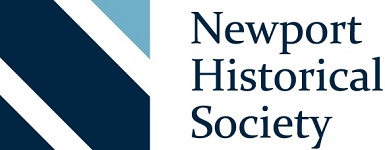Scope & content
This collection documents the debate surrounding the contested origins of the Old Stone Mill in Touro Park and comprises a wide range of materials that span the 17th-20th centuries. The earliest of these are copies of Governor Benedict Arnold’s will, in which he makes reference to “my stone-built wind-mill.” Correspondence in the collection mentions that there were no printed citations of the Mill prior to 1819, though recordings in local documents such as wills and a resolution at a town meeting appear in 1752 and 1756.
The bulk of the correspondence dating from the 1940s-1950s represents the flurry of scholarship and activity that surrounded archaeological excavations of the site in Touro Park between 1944, 1948, and 1954, completed by Waldo Leland, William Godfrey, and Arlington Mallery, respectively.
Many of the pieces are in conversation with one another, and serve to substantiate or refute extant theories. Most notably, scholars and enthusiasts have purported that the Mill is evidence of Pre-Columbian voyages to the Americas by the Norse, the Chinese, the lost tribes of Israel, Crusaders of the 12th and 13th centuries, the Knights Templar, early Irish explorers such as St. Brendon, the Phoenicians, and the Portuguese. Some claim Masonic ties, others believe that the Mill’s walls bear Runic inscriptions and that there is archaeoastronomical significance to its design. A handful of scholars, including representatives of the Newport Historical Society, believe that the Mill was built by early Colonists in Newport, and offer Nicholas Easton, a builder who is known to have created other circular stone structures in the area, as its architect. Connections have also been drawn between similar mills in Chesterton, England and Barbados, where relatives of Benedict Arnold are believed to have lived. The supposed uses for the mill are equally dizzying in their array, and range from Catholic church, mill, watchtower, fortress and lighthouse to refuge from wild animals, temple of pagan worship, and even an early prototype of Newport’s summer cottages.
All together, this collection demonstrates the enduring mystery and importance of the Mill and provides researchers with insight into the theories and conversations that have made this structure central to the lore and allure of Newport, Rhode Island.


